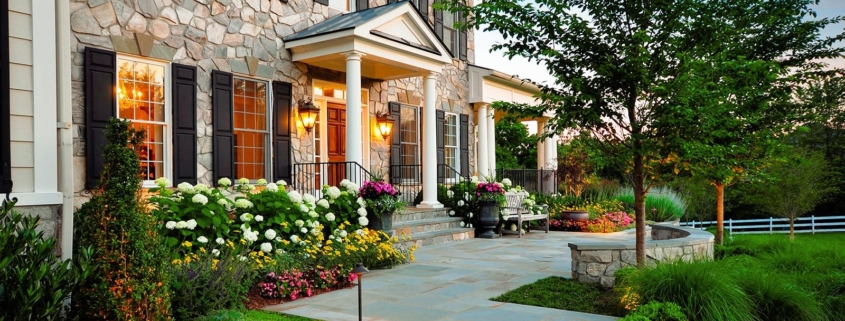Protect Your Home and Yard from Storms with our Landscaping Tips
A few days ago, Houston was once again struck by a powerful storm, highlighting the city’s ongoing vulnerability to extreme weather. With hurricanes, tornadoes, and severe thunderstorms regularly affecting our region, it is more important than ever to take proactive measures to protect your home. One effective approach is to incorporate storm-resistant landscaping.
To be clear, no landscape can be made entirely storm-proof. Storms are unpredictable, sparing some areas while devastating others nearby. Additionally, unexpected hazards, like a stray trampoline, can always arise. However, by following these strategies, you can reduce potential damage and improve the durability of your landscape.
Here are eight practical tips to help you design a storm-resistant landscape that can better endure Houston’s unpredictable weather:
-
Inspect Your Trees at Least Twice a Year
Routine tree inspections are crucial for identifying and addressing potential hazards. It is recommended to inspect your trees at least twice a year, ideally in the spring and fall. Look for signs of disease, dead branches, and structural weaknesses that could cause limbs to fall during a storm.
In addition, it is important to assess trees after major storms, like the one experienced last week, or following any extreme weather event. Hiring a professional arborist for an annual inspection can offer peace of mind and ensure your trees remain healthy and prepared for storms.
-
Prune and Trim Trees Regularly
Regular pruning and trimming are vital for maintaining the health and structural integrity of your trees. Remove dead or weakened branches that could become dangerous projectiles during a storm. Thinning the canopy can also reduce wind resistance, preventing trees from becoming top-heavy. If you are planting new trees in your landscape, consult your landscape designer about their maintenance needs.
-
Tree Placement is Crucial
When planting new trees, consider their mature size and ensure they are positioned at a safe distance from your home. This reduces the risk of trees falling onto your house during severe storms. As a general guideline, plant trees at least 30 feet away from structures and utility lines.
Pro Tip: Whenever possible, plant trees in clusters. Grouping trees together allows them to support one another during high winds, reducing the risk of individual trees being uprooted or snapped. Additionally, clustered trees create natural windbreaks, offering protection to other parts of your landscape.
-
Some Trees Are More Resilient in Storms
Certain tree species are better equipped to withstand strong winds. Choose wind-resistant trees such as live oaks, crape myrtles, and bald cypresses. These trees possess strong root systems and flexible branches, making them less likely to break during a storm.
-
Remove Storm Hazards
Identify and eliminate potential storm hazards from your yard, such as unsecured garden ornaments, lawn furniture, and other loose items. Yes, even that trampoline—make sure it is securely anchored! These objects can become dangerous projectiles during high winds, potentially damaging your home and landscape.
-
Permeable Pavers and Proper Drainage
Effective drainage is vital to preventing flooding and water damage during heavy rains. Ensure your yard has proper drainage systems, such as French drains or swales, to divert water away from your home’s foundation. Using permeable paving materials, such as gravel and pavers, can also help with water absorption and reduce runoff.
-
Use Mulch to Protect Plant Roots
Applying a layer of mulch around plants and trees helps shield their roots from extreme weather. Mulch retains moisture, regulates soil temperature, and minimizes erosion caused by heavy rains. It also provides an extra layer of insulation against sudden cold spells.
-
Invest in Wind-Resistant Shrubs and Ground Cover
In addition to trees, consider incorporating wind-resistant shrubs and ground cover into your Houston Landscape Design. Plants like yaupon holly, Texas sage, and liriope are well-suited to withstand strong winds and add extra stability to your yard. These durable plants help reduce soil erosion and offer a low-maintenance solution for storm-resistant landscaping.
By applying these storm-resistant landscaping strategies, you can greatly enhance your yard’s resilience and safeguard your home from the damaging effects of Houston’s extreme weather. From selecting wind-resistant trees to ensuring proper drainage, taking proactive steps now can help prevent costly repairs and ensure your landscape remains healthy through storm season.
Considering a landscape upgrade? At BDH Landscaping & Design Company Cypress TX, we specialize in designing beautiful, durable landscapes tailored to your needs. Contact us today for a free consultation, and let us help you storm-proof your property with expert design and installation services.





